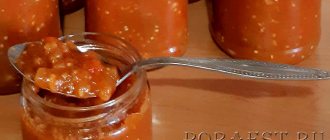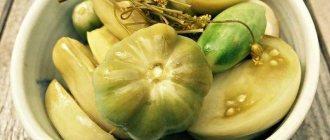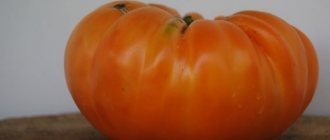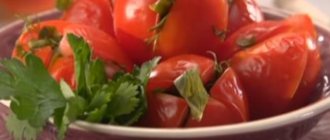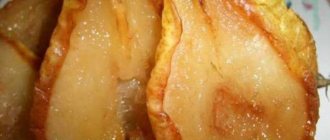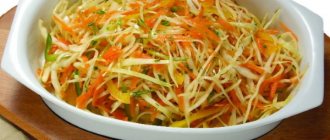Daikon is an unusual vegetable whose homeland is Japan, where it was bred through selective breeding from the so-called Chinese radish or lobo. It does not have the usual rare bitterness, and the aroma is also rather weakly expressed. But dishes made from it are especially popular in Asian countries. Pickled daikon is a dish that no restaurant menu in Eastern countries can do without.
What is daikon
Recipes for preparing this vegetable are completely different. Daikon is consumed fresh, dried and pickled. This vegetable is the fruit of selection. It is impossible to find it in the wild. Daikon is a type of radish. However, this vegetable has a more pleasant taste, crispy flesh and lack of bitterness.
Daikon was first developed in Japan. After some time, the root crop began to be grown in other countries of the world. At the moment, the vegetable is actively grown in the USA, Brazil and Western European countries.
The popularity of daikon can be easily explained by several factors:
- on average, a root crop weighs from 2 to 3 kg;
- all parts of the plant are edible, for example, the leaves can be used to make salad;
- long-term storage without loss of all beneficial properties;
- high productivity and unpretentiousness.
Benefits for the body
Daikon is a root vegetable similar to radish. You can write books about the benefits of this vegetable:
- Daikon contains the entire list of B vitamins (from B1 to B12). They are necessary for every person because they play a huge role in the processes of cellular metabolism. In addition, daikon is rich in vitamins such as C, A, PP, E.
- Next are minerals. These include phosphorus, selenium, copper, iodine, iron, calcium, potassium and even manganese. Daikon also contains pectin, fiber, antioxidants, carotene and enzymes.
The main difference from other vegetables is that this radish does not have the ability to absorb any harmful substances, including heavy metal salts from the soil. Thus, daikon is invaluable for the human body; it has a positive effect on almost the entire body.
Benefits of using daikon:
- cleansing the body. Instead of buying expensive laxatives or diuretics at pharmacies, you just need to regularly eat this product. The result is the same, but there are more benefits, and without side effects. Potassium and calcium (especially potassium salts), which are in its composition, easily and accurately remove toxins and excess liquid;
- increasing immunity. The above number of vitamins speaks for itself. In addition, the internal organs are perfectly cleansed from microbes by the phytoncides and protein components of this vegetable;
- cleanses and protects the liver and kidneys. In order to remove small stones, one glass of daikon juice per day is enough;
- restores the functioning of the nervous system and gives peace and good mood. ½ glass of radish juice is enough to cope with increased aggression;
- promotes weight loss. Since this product contains a lot of vitamins, there is simply no room for fat. For every 100 g there are only 18 kcal. In addition, radishes remove everything unnecessary from the body (toxins, cholesterol);
- cures some skin diseases. If you do not drink the juice of this radish, but rub it into the skin, you can get rid of acne, boils, age spots and even freckles;
- improves hair condition. By rubbing daikon juice into the scalp, you can ensure healthy hair and natural shine. Your hair will be beautiful and strong.
The product has no contraindications as such. However, this does not mean that excessiveness makes sense.
Video: beneficial properties of daikon
All sources agree that daikon is a hybrid. This means that it does not grow in the wild. This vegetable is native to Japan, although nowadays it is grown in many Western European countries, as well as in Brazil and the USA.
Even if you're not a fan of oriental cuisine, this root vegetable has many culinary and gardening benefits:
the plant is not capricious, it does not require special conditions for growth; the fruits are quite early ripening - the harvest can be harvested 1.5 months after planting; large fruits (the weight of one vegetable can reach 3 kg); easy to store - no special conditions required, does not lose its beneficial qualities over time.
The only condition for harvesting is the absence of precipitation, and in the summer there are enough dry days. No special tools are needed - it is pulled out of the ground by the tops.
Fresh daikon must be stored in the refrigerator or cool room, for which a regular cellar will do. In such conditions it can remain fresh for up to 3 months.
Preparation
How to prepare daikon? Anyone can master pickled root vegetable recipes. The main thing is to maintain consistency. While the marinade is preparing, you can prepare the root vegetable. It is recommended to peel it and cut it into half circles or rings. It all depends on the size of the vegetable. Shredded daikon should be salted and then transferred to a colander. This will remove the bitterness from the root vegetable. After an hour, the salt must be washed off. Pieces of root vegetables should be dried and placed in a jar or container. Daikon should be poured with chilled marinade. The container should be tightly closed and shaken lightly. After this, the marinated vegetable should be placed in the refrigerator for 1 night. The finished product can be stored for 14 days.
Recipe: Pickled daikon – Pickle daikon for the winter. Cooking secrets.
Good day to you. I noticed that there is very little information on the Internet about how to cook daikon. And when I typed “daikon recipes” I found very few of those same recipes. Meanwhile, in the cuisines of eastern countries such as Korea, Japan, and China, this root vegetable occupies almost the first place. Well, let’s gradually correct this shortcoming and start with a recipe for a dish called “Marinated Daikon.” The dish is very simple to prepare, but after trying it at least once, you can say that you will immediately fall in love with its unforgettable taste.
And to prepare such a not only tasty but also very beautiful snack
You and I will need these ingredients, the exact quantities of which you can read at the top of this recipe.
1. First, as usual, you need to prepare all the ingredients. You need to take fresh daikon, make sure that it is not soft and dried out. Otherwise, the inside becomes like a coarse sponge and is not suitable for any dish. Wash the daikon and peel off the top layer, leaving white, hard pulp.
2. If the daikon is not very large and thick, then cut it into thin circles, and if you got a large specimen, then cut these circles into two or four parts.
3. In order to remove excess moisture from the daikon and the slight bitterness present in this root vegetable, sprinkle the cut daikon circles with salt and allow the liquid to drain. To do this, I placed the daikon on a sieve.
Daikon in Korean
How to prepare pickled daikon in Korean? The recipe is suitable for lovers of Asian cuisine. This is a very interesting and unusual snack. To prepare the root vegetable you will need:
- 600 g daikon.
- 50 ml of oil, preferably plant-based.
- 1 onion.
- Up to 5 cloves of garlic.
- 1 teaspoon coriander.
- 0.5 teaspoons of red pepper and salt.
- 1 tbsp. spoon of 9% table vinegar.
Radish kimchi with ginger and green onions
Korean radish kimchi is another option for preparing a delicious rare dish. Products for cooking:
- 2 kg daikon;
- 2 large spoons of salt and granulated sugar;
- ginger root - tablespoon;
- 4 stalks of green onions;
- 6 cloves of garlic;
- 100 grams of red pepper flakes;
- 60 ml soy sauce.
The cooking method is not complicated. This is accessible to anyone, even an inexperienced cook:
- Cut the daikon into small cubes.
- Place in a container and mix with salt and sugar.
- Leave some of the juice for preparing the marinade, drain the rest.
- Finely chop the ginger, green onions and garlic.
- Add ginger, onion, garlic, soy sauce and 70 ml of juice to the radish.
- To stir thoroughly.
You can serve immediately or refrigerate for 1-2 hours.
Cooking process
To prepare pickled daikon, peel the root vegetable and wash it well in running water. After this, the vegetable can be chopped. It is recommended to grate it to prepare Korean carrots. Garlic should be peeled and crushed using a press. If coriander is used in grains, then the spice should be ground in a mortar in combination with a small amount of salt. Add vinegar to the root vegetable. After this, you can add all the spices.
Now it’s time to prepare the aromatic oil. For this you will need a bow. It must be peeled and finely chopped. It is recommended to fry the onion in oil. Thanks to this, it will acquire a unique aroma. After this, pour the oil onto the garlic through a slotted spoon. Daikon is almost ready. All that remains is to mix.
Prepare the necessary ingredients
Pickled daikon is a delicious side dish for meat and fish dishes, and can also be eaten on its own as a dietary snack. To prepare this dish, you need the main ingredients: daikon, marinade.
Japanese radish is grown in many European countries, the USA and Brazil. In cooking, it has many advantages: no special conditions are required for storage, and its beneficial qualities almost do not disappear over time.
It is correct to collect daikon from the garden in dry weather by pulling it out of the soil by the tops. Fresh root vegetables are placed in the refrigerator or left in a cool room, such as a basement or cellar.
To prepare pickled daikon, wash it in cold water using a special brush. Then the skin is removed, peeling them like carrots or potatoes, washed off again and left to dry. In order to chop the radish, you can use a special grater that allows you to get thin circles.
See also
Delicious recipes for pickled cherry tomatoes for the winter, finger licking good, with or without sterilization
Read
Recipe Features
To make Korean daikon more original, you can add a natural yellow or green dye to it. The result is a savory and spicy appetizer that is ideal as a side dish for fish and meat dishes. It is worth noting that daikon prepared in this way can be used to make sandwiches with ham or sausages.
The recipe is also suitable for cooking carrots and beets. If you put vegetables prepared in this way on one dish, you will get an original three-color salad.
Pickled carrots and daikon (Tangyn muchkho jolim) with video
Pickled carrots and daikon (Tangyn muchkho jolim) with video
Panchan (appetizers and salads) made from carrots and daikon radish are very popular in Korean cuisine. Daikon, unlike regular radish, does not contain bitterness, and its aroma is much weaker. At the same time, it is crunchy, elastic, tastes good and absorbs marinades remarkably well. Most Korean daikon snacks and pickled treats are mildly spicy and spicy. And this appetizer, the recipe for which we will describe below, does not have any spicy notes - it is sweet and sour and goes well with almost any dish as a side dish. A recipe for those who love super quick and easy to prepare pickled vegetables. Even a completely inexperienced cook can handle it. These vegetables are especially good as an appetizer for meat dishes. They are also served with rice dishes - they add piquancy.
If you like Korean salads and snacks made from crunchy vegetables - daikon and carrots, we also recommend watching a recipe for daikon salad with a spicy-hot dressing (Musengche muchhe), a recipe for daikon kimchi (Kaktugi), as well as a video on how to prepare our favorite country carrots in Korean.
Ingredients:
- daikon radish – 300 g,
- carrots – 300 g.
For the marinade:
- water – 250 ml,
- white rice vinegar – 250 g,
- granulated sugar – 200 g,
- sea salt - a pinch.
Prepare the marinade - pour water and white rice vinegar into a suitable saucepan (for example, Alumite IH Happycall saucepan with ceramic coating 3003-1090, diameter 20 cm). Add granulated sugar and a pinch of sea salt.
ADVICE:
You should not use regular table vinegar instead of rice vinegar - it contains 9% acetic acid, and rice vinegar only 3-4%, i.e. less sour.
Bring the liquid to a boil over medium heat, stirring occasionally until the sugar dissolves (about 3-5 minutes).
Remove the saucepan from the heat and let the marinade cool at room temperature.
Wash the carrots and daikon, then remove the remaining tops and peel the root vegetables.
Then cut both the carrots and the daikon into strips (for example, using a Korean carrot shredder or other convenient method). You can cut it into bars, it’s a matter of taste. It is worth remembering that root vegetables cut into bars will take longer to marinate.
Place the carrots and daikon in a suitable bowl and stir into the julienne mixture.
Place the vegetable strips in a sterilized jar and pour in the cooled marinade. Cover with a lid and leave to marinate at room temperature for 3-4 hours.
ADVICE:
For deeper flavor and a cool, crunchy texture, place the jar in the refrigerator to cool for about 30 to 60 minutes more.
The ready-made chilled snack can be eaten as panchang with your favorite Korean (and not only) dishes.
Best wishes, Your Corshop.
Features of product selection
If the root crop weighs more than 500 grams, then the amount of other components should be increased proportionally. If you don’t have rice white vinegar, you can replace it with regular table vinegar. However, the concentration of this substance should be lower and be no more than 3.5%. It is worth considering that table vinegar tastes a little sharper than rice vinegar. That is why it is recommended to dilute it. You should not use grape or apple cider vinegar to prepare daikon, as these substances have the aftertaste of the original raw material.
As for soy sauce, it should be classic. You should not use the component with various additives, for example, mushrooms. The water should be boiled and cooled to room temperature.
Cooking steps
So, how to make pickled daikon in Japanese. The recipe is classic. First you need to prepare all the products. Root vegetables should be peeled, washed thoroughly and cut into rings or cubes. It all depends on what the pickled daikon will be used for. You can chop the root vegetable using a shredder or knife. The radish should be placed in a deep container, sprinkling each layer with salt.
After 15 minutes, it is recommended to drain the brine. After this, the root vegetable should be sprinkled with sugar in the same way as salt. After 15 minutes, drain the juice. Now pour soy sauce, white rice vinegar and boiled water into the bowl with the prepared daikon. After this, the container with the root vegetable should be closed with a lid or covered with plastic wrap. After a day, the daikon will be ready.
What is it suitable for?
This pickled daikon can be used as an addition to main courses or as a snack. Korean, Japanese and Chinese cuisines often use a variety of vegetables pickled in this way.
When you open a jar of daikon, you can hear a specific smell. However, the taste of such a snack is mild and without bitterness. The root vegetable turns out to be refreshing and stimulates the appetite. At the same time, the snack is not sour, not spicy and crispy. Pickled daikon can be stored for quite a long time.
Cooking process
It is recommended to peel, wash and cut daikon into long bars. The jar should be steamed. Carefully place the root vegetable into the prepared container, placing its pieces vertically.
After this, you can prepare the marinade. To do this, pour water into the pan, add salt, sugar and vinegar. When the contents are hot, add saffron. The finished marinade should be cooled and then poured into a jar with daikon. The container should be tightly closed and left warm for 7 days. After this, the product can be placed in the refrigerator for further storage.



